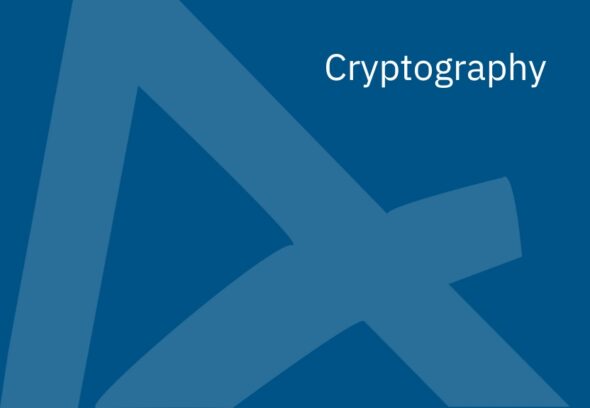What Is Quantum-Resistant Cryptography?
Post-quantum cryptography or quantum-resistant cryptography means the development of cryptographical algorithms and practical techniques for use in scenarios when quantum computers become a reality. Once they do exist as viable products, quantum computers will render many of the presently used encryption techniques, which are employed to protect our mainframe communications and data, ineffective.
Quantum-resistant cryptography’s main goal is to come up with algorithms for securing data that cannot be breached by quantum computers. These algorithms reportedly rely on sophisticated mathematical theories and intricate numerical calculations that are thought to be invulnerable to quantum hacking attempts. Quantum-resistant cryptography serves as an assurance of long-term protection of data and organizational mainframe systems by implementing better cryptography.
Mainframes And Their Importance
The mainframes are big, highly capable computer systems that have been the workhorses of many business sectors for many years. These are strong and dependable systems that are employed to handle and store large volumes of essential operational information, such as personal financial transactions, patient health records, and even national security data. Mainframes are widely regarded for their high throughput, flexibility, and security, which are critical considerations when designing modern integrated systems.
While we have seen a shift towards cloud and distributed systems, mainframes remain relevant and are still in high demand today. These are the most reliable, available, and secure to provide data integrity compared to other storage systems or technologies, which makes them essential for organizations that need the most secure storage for their data. Since the threats are developing and new ones are being added, for example, the influence of quantum computers, the need for a more extended perspective of securing mainframes is needed.
The Benefits Of Quantum-Resistant Cryptography For Mainframes
Adopting quantum-resistant cryptography for mainframe systems offers several key advantages:
- Future-Proofing Data Security: Mainframe data is safeguarded by QR to counter the potential break of encryption by quantum computing, which is why mainframes need QR.
- Compliance and Regulatory Requirements: Some industries for instance finance, healthcare, and government have laid down rules and regulations on data security and privacy that call for the use of strong techniques in encryption. This type of cryptography may also address the following regulatory demands and ensure that organizations comply with the law.
- Safeguarding Critical Infrastructure: Mainframes are frequently found at the center of many essential business systems, for example, financial institutions, public services, and transportation systems. It is crucial to protect these systems using cryptography that is resistant to attacks from quantum computers and to ensure that the important services provided by these systems remain unimpaired and secure in the future.
- Competitive Advantage: Thus, by implementing quantum-resistant cryptography, organizations may prove that they are ready to guarantee high levels of security and contribute to the industry’s development, which can also bring them benefits in the form of increased market shares.
- Reduced Risk of Data Breaches: Quantum-resistant cryptography reduces the likelihood and impact of cyberattacks, a problem that can cost organizations millions of dollars, and, in some cases, lead to legal consequences.
Quantum-Resistant Cryptography To Ensure Security For The Future
But with quantum computing on the horizon, organizations need to take a preventative approach to protecting their mainframe assets. Adopting quantum-resistant cryptography is not only a sound decision but one that can guarantee the longevity of an organization’s information and keep it safe from quantum danger.
Thus, by moving to QR than algorithms, organizations can safeguard their mainframe platforms and keep them immune to emerging threats. This transition is not a trivial one and calls for a whole-systems approach of evaluating the existing security environment, the threats, and the measures needed to apply to the cryptographic system.
Steps To Protect Mainframes With Quantum-Resistant Cryptography
To secure your mainframe systems using quantum-resistant cryptography, consider the following steps:
- Assess Your Current Cryptographic Infrastructure: Inventory all the cryptographic resources you currently have in use such as the encryption and key management schemes in place.
- Identify Vulnerabilities: Perform an audit of your mainframe systems to pinpoint any weak points that a quantum-based attack may be able to infiltrate.
- Develop a Quantum-Resistant Cryptography Strategy: Develop a detailed plan that will indicate the general direction and the steps that have to be taken for the mainframe systems to shift from quantum-susceptible cryptography. This can entail a study, experimentation, and partnership with other businesses and scholars.
- Implement Quantum-Resistant Encryption Algorithms: Accommodate to the new solutions gradually by substituting the outdated encryption algorithms for quantum-safe ones, like those suggested by the NIST or other organizations.
- Enhance Key Management Practices: It is crucial to review your key management procedures to ensure compliance with quantum-resistant cryptography principles, such as higher key sizes and more frequent key updates.
- Train and Educate Your IT Team: Closely monitor and ensure that your IT team is well-trained and educated to meet the demands of the quantum-resistant cryptographic infrastructure.
- Monitor and Continuously Improve: Continuously review and update your mainframe devices and the new threats and incorporate the necessary changes to your quantum cryptography plans for the secure future of your important information.
Conclusion
As quantum computing grows closer to reality, protecting mainframe systems employing quantum-resistant cryptography is a wise business strategy for companies that use these complex computing platforms. By adopting this revolutionary technology, your data can be protected from what is yet to come, meet compliance standards, and protect your valuable structures from adverse events.
Get Ready to Reach New Heights!
Start your free trial today.




